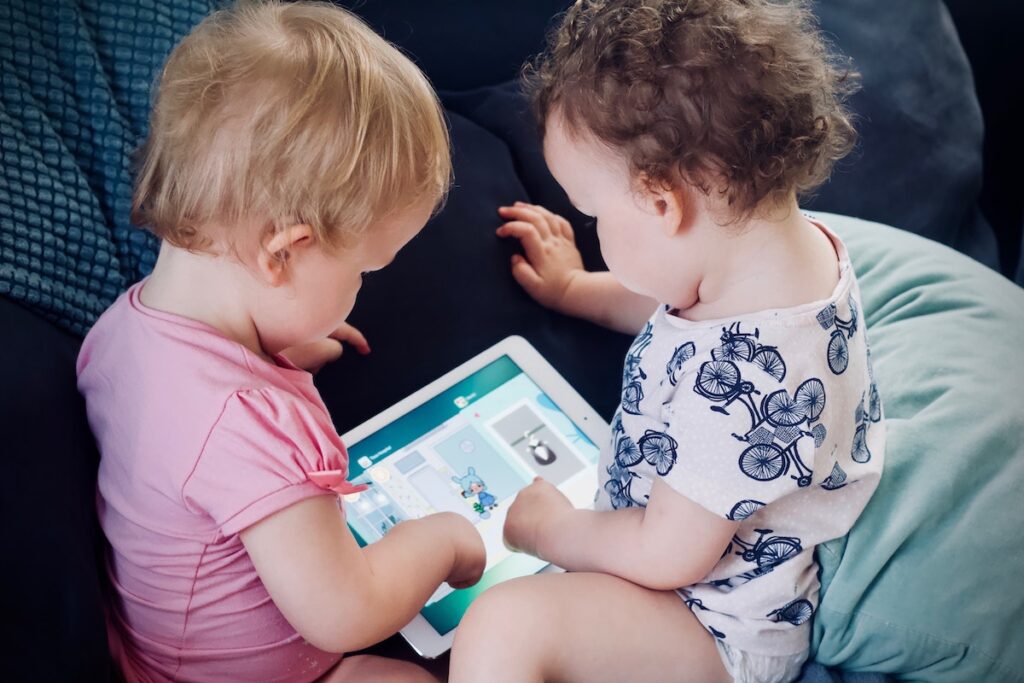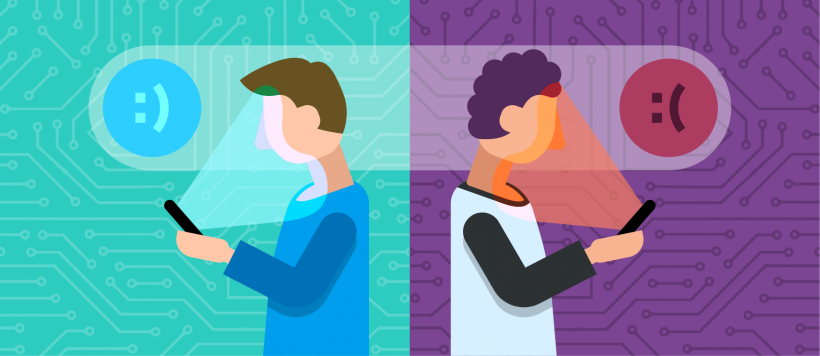The proliferation of digital technology in today’s society has ushered in a new era of connectivity, information access, and convenience. While the benefits are evident, concerns are growing about the impact of technology on the mental well-being of the younger generation. As smartphones, social media, and online platforms become integral to daily life, it’s crucial to examine how these digital advancements shape the mental landscape of today’s youth.
The digital age has brought about unprecedented access to information, connecting individuals across the globe. However, this connectivity comes with a double-edged sword. On one hand, it fosters a sense of belonging and opens up avenues for learning. On the other hand, constant exposure to social media and virtual interactions can lead to heightened social comparison, cyberbullying, and a distorted sense of reality. Understanding the nuances of these dynamics is essential to comprehend the true impact of technology on the mental well-being of the younger demographic.
Moreover, the pervasive nature of digital devices has blurred the boundaries between personal and online life. The constant influx of notifications, the pressure to curate an ideal online persona, and the fear of missing out (FOMO) contribute to a state of perpetual connectedness. This interconnectedness, while offering a sense of always being in the loop, raises questions about the potential toll on the mental health of the youth. Examining these aspects will shed light on the intricate relationship between technology and mental well-being.
The Role of Social Media

Social media platforms play a central role in shaping the digital experiences of today’s youth. The allure of likes, shares, and comments creates a virtual ecosystem where self-worth is often tied to online validation. The curated nature of social media content, coupled with algorithms designed to capture attention, can foster unrealistic standards and expectations. This constant exposure to carefully crafted online personas can contribute to feelings of inadequacy, anxiety, and low self-esteem among the younger demographic.
Furthermore, the addictive nature of social media, characterized by endless scrolling and constant updates, can disrupt sleep patterns and contribute to a sedentary lifestyle. The compulsion to stay connected can lead to a neglect of real-world social interactions and physical activities, impacting both the physical and mental well-being of the youth. This neglect can even extend to essential things like dental hygiene. In Fayetteville, for instance, parents concerned about their children’s oral health might prioritize scheduling appointments for pediatric dentistry in Fayetteville rather than indulging in another round of online browsing. Examining the intricate dynamics of social media’s influence on the mental health of today’s youth, and its potential ripple effects on other crucial areas like dental care, is imperative in understanding the broader implications of the digital dilemma.
Educational Landscape in the Digital Age
The integration of technology in education has transformed traditional learning methods. While digital tools offer unprecedented access to educational resources, the shift to online learning has its challenges. The digitalization of education can lead to increased screen time, potentially contributing to eye strain, fatigue, and concentration issues. Moreover, the digital divide, where not all students have equal access to technology, exacerbates existing disparities in educational opportunities.
The pressure to excel academically, compounded by the constant connectivity to study materials and academic platforms, can contribute to heightened stress levels among students, especially those who also engage in hobbies like building and racing 1/7 scale RC bodies. The intricate details and demanding precision required in such pursuits can be both mentally stimulating and a welcome escape from academic pressures. However, the digitalization of the educational landscape still requires a nuanced examination of its impact on the mental well-being of the younger generation. Understanding the interplay between technology, academic pressures, and mental health, whether in the classroom or the RC track, is crucial in crafting effective strategies to support the holistic development of today’s youth.
Parental Concerns and Digital Parenting
As the digital landscape continues to evolve, parents find themselves grappling with the challenges of raising children in an increasingly connected world. Concerns about screen time, online safety, and the potential impact of digital technology on children’s behavior and social development are at the forefront of parental worries. The need for effective digital parenting strategies is evident to navigate the complexities of the digital age.
Renting a vehicle from Rent a Car in Sarajevo and embarking on a family road trip could be the perfect antidote to the digital overload. Not only will you be giving your kids a much-needed break from screens, but you’ll also be creating lasting memories and fostering a love for travel and cultural exploration.
Balancing the benefits of technology with the potential risks requires a proactive approach from parents. Establishing open communication, setting boundaries on screen time, and fostering a healthy digital environment are essential components of digital parenting. Understanding the concerns parents harbor regarding the digital well-being of their children provides insights into the broader societal implications of the digital dilemma.
Navigating the Social Landscape: Digital Relationships and Mental Health

In the realm of the digital dilemma, the dynamics of interpersonal relationships among the youth warrant special attention. The constant hum of notifications and the lure of curated online personas can feel like a never-ending game of keeping up. It’s easy to forget the raw, messy beauty of real-life connections, the kind that linger long after you close your laptop. That’s where adventures like bodywork in Austin come in. It’s a chance to reconnect with your own body, to feel the ground beneath your feet and the wind in your hair. It’s a reminder that true connection starts from within, and sometimes, the best way to navigate the digital noise is to step outside and move your body.
Digital relationships can provide a sense of connection, especially for those who may struggle with face-to-face interactions. However, the potential for miscommunication and the absence of non-verbal cues in virtual conversations can lead to misunderstandings and emotional strain. Exploring the impact of digital relationships on the mental health of today’s youth involves unraveling the complexities of maintaining meaningful connections in the digital age.
Furthermore, the surge of digital dating platforms has plunged young hearts into a double-edged ocean. While the vast expanse of these platforms offers a shimmering mirage of potential connections, lurking beneath the surface are treacherous currents of online harassment, ghosting, and the relentless pressure to conform to societal beauty standards. Imagine, for a moment, the mental strain of crafting the perfect online persona, a carefully curated digital avatar that might land that coveted match. It’s like choosing the most flattering swimsuits for a crowded beach, all the while knowing the tide of judgment can pull you under in an instant.
The Technological Tether: Screen Time and its Ramifications
A critical aspect of the digital dilemma is the pervasive nature of screen time in the lives of today’s youth. Beyond the educational realm, young individuals are constantly engaged with screens for entertainment, socializing, and information consumption. Excessive screen time has been linked to various physical and mental health issues, including sedentary behavior, sleep disturbances, and symptoms of digital eye strain.
But wait, there’s another side to the screen story! Video production in New York, for example, is exploding with young talent, using their digital savvy to tell stories and create art. Imagine teenagers collaborating on a short film about the challenges and triumphs of growing up in the city, or a group of friends putting their digital storytelling skills to work for a local non-profit. Suddenly, screen time isn’t just a passive consumption of content, but a platform for creativity, expression, and even making a difference.
The omnipresence of screens, from our smartphones to smart TVs, has us glued to their glow. But amidst the endless scroll and the dopamine rush of notifications, a worry niggles: are we sacrificing something precious for this digital feast? Constant exposure to the fast-paced, flashy world online might be rewiring our brains, shortening our attention spans and making us crave instant gratification like kids with candy bars. That’s why it’s crucial to understand the intricate dance between screen time, how our minds develop, and our overall well-being.
Just like we wouldn’t let our kids gorge on sugar all day, it’s time we crafted a healthier balance. Think brisk walks in the park, engaging conversations, and maybe even that long-overdue roof cleaning by a company for roof cleaning in St. Augustine (they’ll whisk away the grime while you reclaim some analog peace!). Remember, a healthy mind needs more than just pixels and pings. So, let’s pause, step back from the screen, and rediscover the joy of the world beyond the digital haze.
The Evolution of Digital Identity: Online Persona and Self-Perception
In the digital age, the concept of identity is no longer confined to the physical realm. Young individuals actively curate online personas through social media, gaming platforms, and other digital spaces. While this digital self-expression offers a creative outlet, it also introduces questions about authenticity, self-esteem, and the impact of online identity on mental health.
The pressure to maintain a positive online image can contribute to a phenomenon known as “digital perfectionism.” Young individuals may feel compelled to showcase only the highlights of their lives, creating a distorted narrative that omits challenges and imperfections. It’s like striving for the perfectly manicured lawns and vibrant flowerbeds you see in real estate listings, forgetting the hours of sweat and toil put in by companies for landscaping in Florida to achieve that picture-perfect look. Examining how the cultivation of digital identity intersects with self-perception, self-worth, and mental well-being provides insights into the psychological toll of living in a hyper-connected digital world, a world where the pressure to present a flawless facade can feel as relentless as the Florida sunshine.
Technostress and Burnout: Navigating the Digital Fatigue
The constant ping of your phone, the barrage of social media updates, and the pressure to reply to emails instantly – it’s no wonder so many of us feel overwhelmed in this digital age. This technostress, as they call it, is all about that buzzing anxiety that comes from never being able to truly disconnect. It hits our young folks especially hard, juggling school, friends, and the never-ending scroll of online expectations. It’s like carrying a whole world in your pocket, and sometimes, you just gotta put it down for a breather.
Take a walk, lose yourself in a book, or even call a friend the old-fashioned way – anything to break free from the tech trance. Remember, the virtual world will always be there, but real life is happening right now, in the messy, beautiful space between notifications.
And hey, if your foundation starts showing cracks under the pressure of it all, there’s always a company for foundation inspection in Kansas City that can help you shore things up. Take a deep breath, disconnect, and reconnect with the world around you – your mind (and maybe your house) will thank you for it.
Moreover, the blurred boundaries between work, social life, and personal time in the digital age can lead to burnout among young individuals. The pressure to excel academically, maintain an active online presence, and meet societal expectations can result in mental fatigue. Unraveling the complexities of technostress and burnout sheds light on the challenges that arise from the intersection of technology, societal expectations, and the mental well-being of the younger generation.
Digital Detox: Nurturing Mental Well-being in the Digital Age
Amidst the challenges posed by the digital dilemma, the concept of a “digital detox” has gained prominence as a strategy to mitigate the potential negative effects of technology on mental health. A digital detox involves intentionally unplugging from digital devices for a specified period, allowing individuals to recalibrate and prioritize other aspects of life.
Research suggests that taking breaks from digital engagement can lead to improved sleep, reduced stress levels, and enhanced overall well-being. Imagine stepping away from the screen and indulging in a self-love adventure at a plus size boudoir studio in Vancouver. Disconnect from the digital world and reconnect with your inner goddess in a supportive and empowering environment. Exploring the effectiveness of digital detoxes, just like exploring the liberating world of boudoir photography, can provide valuable insights into holistic approaches to mental health in the digital age. Encouraging mindful technology use and fostering a healthy balance between digital and offline activities is crucial for the well-being of today’s youth but for anyone seeking self-discovery and renewed confidence, a boudoir experience can be a transformative digital detox in itself.
Emerging Technologies and Future Considerations

The digital landscape keeps expanding like a kid’s imagination, with all these new online worlds popping up. It’s exciting, like stepping into a sci-fi movie, and seeing how AI and VR are changing the way we interact and learn. But just like that movie monster hiding under the bed, there are some things to keep an eye on, especially for young folks. Spending too much time in these virtual playgrounds might mess with their focus, making it harder to concentrate on real-life stuff like schoolwork or even face-to-face conversations. It’s like living on a constant rollercoaster, all highs and lows, which can take a toll on their mental well-being.
That’s why it’s important to find a balance, like making sure the foundation of their real life is strong and steady, just like a sturdy house built on solid ground. If your house ever needs some repairs, like maybe cracks in the foundation, there are companies like the Company for foundation repair in Carrollton that can help. But the most important thing is to make sure your kids have a strong foundation in the real world, so they can navigate the digital one safely and healthily. Remember, even the coolest virtual experiences can’t replace the real connections and challenges that shape us into well-rounded individuals.
The digital world is weaving itself ever deeper into the fabric of our lives, from wearable health trackers whispering biofeedback in our ears to virtual assistants reminding us to take our vegan omega 3 supplements. These innovations offer a treasure trove of data and insights, empowering us to actively manage our well-being. But as we step into this gleaming future, a shadow of concern creeps in. Are we trading our privacy for personalized wellness? Is the constant hum of self-monitoring a lullaby or a siren song, luring us into a vortex of anxiety? As technology shapeshifts, so must our understanding of mental health, ensuring we navigate this digital odyssey with both our bodies and minds nourished and protected.
Conclusion
The digital dilemma surrounding the impact of technology on the mental well-being of today’s youth is a multifaceted and ever-evolving challenge. From navigating digital relationships to managing screen time, cultivating online identities, and addressing the implications of emerging technologies, each aspect contributes to the intricate tapestry of the digital age’s impact on mental health.
As we delve deeper into the complexities of the digital landscape, it becomes evident that a nuanced and holistic approach is necessary. Understanding the intricate interplay between technology and mental well-being allows for the development of strategies that empower the youth to thrive in the digital age. By fostering a conscious and balanced relationship with technology, society can pave the way for a generation that navigates the digital landscape with resilience, self-awareness, and a focus on holistic well-being.


